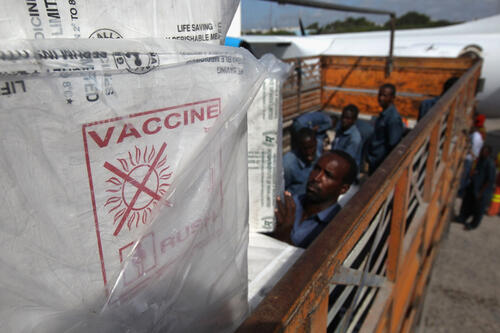Choice of Medicare drug plan reduces opioid use
To prescribe or not prescribe? In the realm of the nation’s opioid epidemic, it’s an important question.
Research has shown that inappropriate use of prescription opioids is part of the reason behind a dramatic rise in opioid-related deaths since 2000. By 2015, the amount of opioids prescribed in the U.S. had tripled — enough for every American to be medicated around the clock for three weeks, at 5 milligrams of hydrocodone every four hours.
Now, new research by a trio of Stanford scholars shows how different insurance strategies affect the volume of opioid use and could help stem inappropriate prescribing behaviors.
The study, released in a working paper by the National Bureau of Economic Research, was co-authored by Stanford Health Policy’s Laurence C. Baker, M. Kate Bundorf, and Daniel P. Kessler. Baker and Bundorf are professors in the Department of Health Research and Policy at the Medical School; Kessler is a professor in the Law School and Graduate School of Business, and a senior fellow at the Hoover Institution. All are also senior fellows at the Stanford Institute for Economic Policy Research (SIEPR).
Their study — the first to investigate the effect of the form of Medicare drug coverage on opioid use — found that enrollment in Medicare Advantage, a combined medical and drug insurance plan, significantly reduces the likelihood of beneficiaries filling an opioid prescription, as compared to enrollment in a stand-alone drug plan.
Compared to beneficiaries enrolled in stand-alone plans, those enrolled in the integrated Medicare Advantage plan were 37 percent less likely to get an opioid prescription, according to their analysis of drug claims from 2014.
The researchers also found that enrollment in integrated insurance coverage under Medicare Advantage had a disproportionate effect on the likelihood of filling an opioid prescription from the nation’s highest opioid-prescribing doctors — the top 1 percent of prescribers in Medicare Part D. The lower likelihood of prescriptions from these high prescribers to Medicare Advantage enrollees accounted for more than half of the reduction, according to their findings.
To understand the scope of this health plan-related effect and what’s at stake, consider the backdrop laid out in the study:
Since its implementation in 2006, Medicare Part D has become the nation’s largest purchaser of prescription opioids. More than 42 million Americans are enrolled in Medicare Part D — either under the stand-alone drug plan or the integrated Medicare Advantage plan.
What’s more, opioid prescriptions are concentrated among a relatively small group of “high prescribers.”
According to research published in the 2016 edition of JAMA Internal Medicine, more than one-third of opioid prescriptions under Medicare Part D were made by about 8,000 doctors, making up the top 1 percent of prescribers. And according to the Office of the Inspector General of the Department of Health and Human Services, “extreme use” and “questionable prescribing” have put almost 90,000 beneficiaries at serious risk for opioid misuse or overdose.
Because the researchers did not examine patient health outcomes, they could not definitively determine that enrollment in Medicare Advantage reduced only inappropriate opioid use. However, because the reduction in opioid use came disproportionately from high prescribers, and previous work has found that Medicare Advantage enrollees had higher prescription drug use overall, the reduction in use that the researchers found was targeted rather than a result of a broader effort to restrict access to treatment.
The researchers’ results support the conclusions of previous work that integration of prescription drug coverage with the other benefits provided by Medicare Advantage plans
improves the quality of care. Further study will be needed to drill deeper into the reasons behind the impact of Medicare Advantage plans, and whether a similar effect occurs in non-elderly populations, the researchers said.




